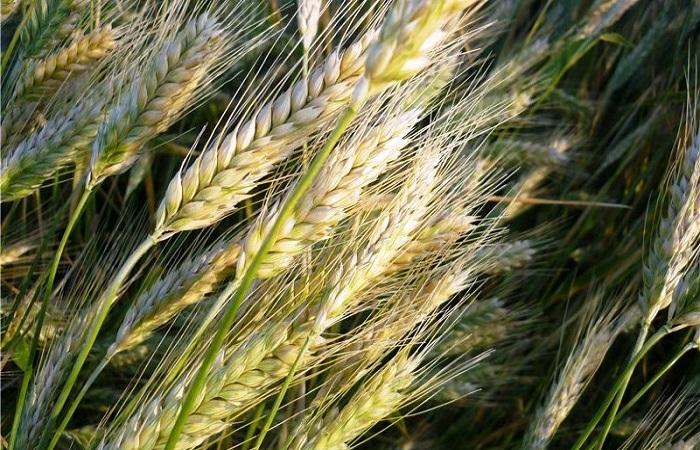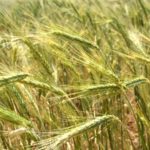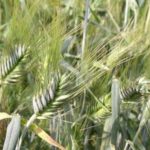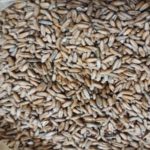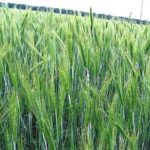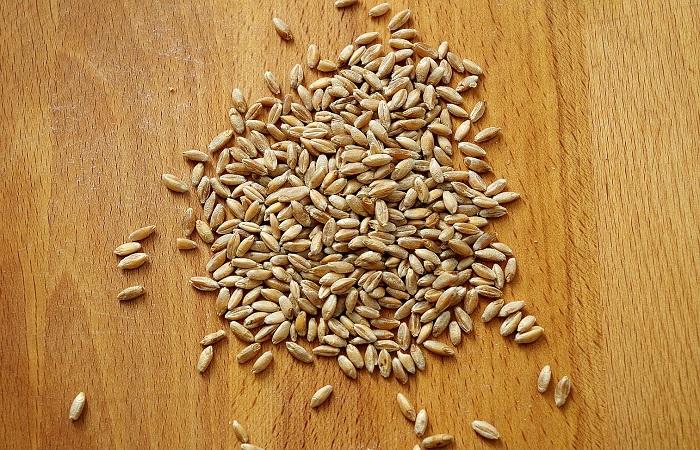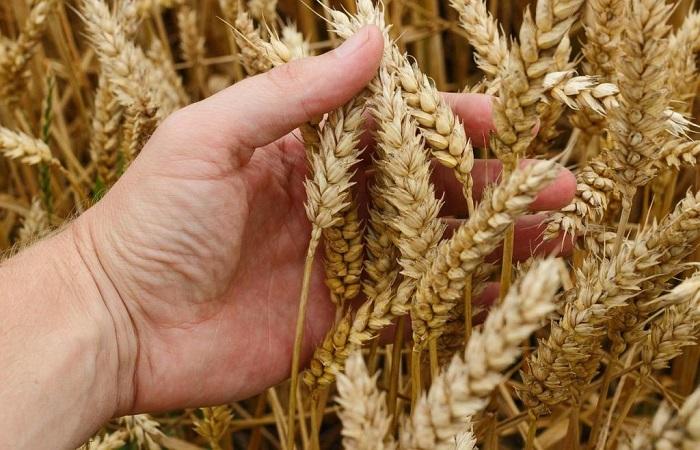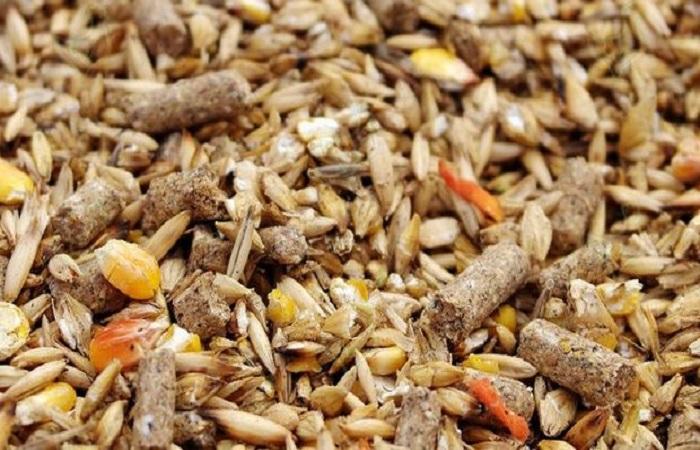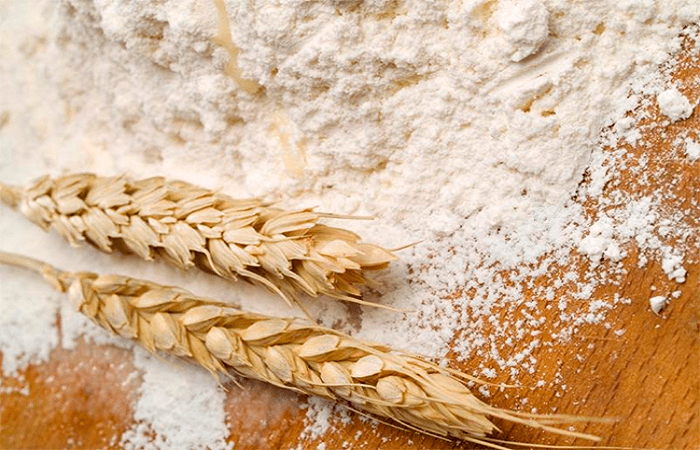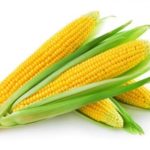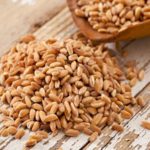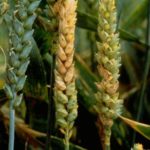The crops grown for grain production are varied. Let's consider the history of triticale, a hybrid of wheat and rye, what the plant looks like, its characteristic features, types and varieties of the crop. The chemical composition of fruits and nutritional value, what benefits and harms they bring, characteristics of cultivation and use in agriculture and cooking. The difference between a hybrid and regular wheat.
What is triticale
A new grain crop has recently appeared thanks to artificial breeding from related cultivated species - wheat and rye.Triticale appeared at the end of the 19th century. At first, the hybrids were sterile, then it was possible to obtain plants that could produce offspring. Today, the wheat-rye hybrid is grown as a food and fodder crop.
History of discovery
They tried to get a new plant that would combine the best qualities of the parent species back in the 19th century. The first representatives of the culture were bred in 1875, but could not produce offspring. A few years later, in 1888, plants were obtained from which they received a harvest, but a small one.
In 1936, the stimulating effect of the alkaloid colchicine on plant germ cells was discovered. After this, it became possible to obtain hybrid mixtures of wheat and rye, which were capable of reproduction and stable transmission of heritable characteristics to subsequent generations.
Today, hexaploid varieties of the hybrid are considered the most popular for cultivation. The cultivation of varieties is spreading every day, the crop is mainly grown in Russia and the countries of eastern and southern Europe; in Poland it occupies one of the leading places in the list of grains.
Appearance and characteristics
A hybrid plant 70-115 cm high, spikelet length - 10-12 cm, leaf color - dark green and gray, leaves develop earlier than those of wheat and do not turn yellow for a long time. The fruit is a yellow grain with a brownish tint, the weight of a thousand seeds is 40-60 g. The yield of a promising crop is 30-35 centners per hectare for grains and 60 centners for fodder varieties.
Triticale is more resistant to disease and drought than its parent plants, and tolerates cold better than wheat. The winter variety can withstand soil freezing and does not require watering.It can grow well in not very fertile soil.
The nutritional value of the hybrid is higher than that of wheat - the protein in the grain is 1-1.5% more and 3-4% more than that of rye. The grain contains less gluten, more amino acid lysine and fat. The green mass of the crop is also more valuable than the greens of the original species - 1 kg of it contains 0.3 feed. units, whereas in wheat – 0.18 feed. units
Triticale is used to produce flour used for making baked goods, dough, and pasta. The disadvantage of the culture is the difficulty of separating the grain shells from the center.
Types and varieties
Spring and winter varieties of crops are grown; the following are popular among them:
- Altaiskaya-5. Winter triticale, recommended for Western Siberia. The yield of the hybrid of this variety is average - 32.5 centners, maximum - up to 70 centners. The variety is resistant to most diseases.
- Amphidiploid 256. Winter variety, intended for the North Caucasus regions. The average yield is 43.5 c/ha. The hybrid tolerates drought and is resistant to stem lodging and shedding.
- Yarilo. A spring-type grain-forage variety, recommended for cultivation in the North Caucasus regions. Productivity was noted at 25 centners per hectare. Resistant to many diseases.
Feed varieties:
- Argo. A winter variety grown for feed grain and greens. Resistant to infections and pests, yield – 180 c/ha.
- Tornado. Winter variety, grain yield – 60 c/ha. The variety is recommended for cultivation in the Volga region and central regions. Resistant to fungi, except snow mold.
Features of cultivation
Triticale is suitable for turf soils and podzol with an acidity pH of 5.5-6.5. Heavy and waterlogged soils are not suitable for it.Preparing the land for sowing occurs in the same way as for wheat: plowing and applying organic matter and nitrogen fertilizers.
In case of crop disease, the crops are sprayed with fungicides, and in case of pest attack - with insecticides. Ripe triticale grains can germinate while still in the ear, so harvesting must be done on time.
Chemical composition and nutritional value
100 g of product contains 12.8 g of proteins, 2.1 g of fat, 54.5 g of sugars, 2.6 g of fiber. The calorie content of the hybrid fruit is 293 kcal. Vitamins contained in: B1, B2, B5, B6, B9, U, PP. Microelements: phosphorus, calcium, iron, manganese, potassium, magnesium, copper and zinc.
The nutritional value of triticale is expressed in vitamin compounds and mineral elements, plant and animal proteins, fats, and digestible carbohydrates. Substances enter the body from products obtained from triticale grain.
Benefits and harms
The benefits of triticale are expressed in a positive effect on the organs of the digestive system; the crop has high nutritional value. Products from the fruits of the plant should not be consumed by those who have an individual intolerance to the substances in its composition. This is especially true for gluten intolerance.
Application
The main use of triticale grain and green mass is as feed for farm animals.Part of it is used to make flour and food products for human consumption.
In agriculture
Compound feed is prepared from the fruits of the hybrid; it is fed with grain or compound feed for cattle, sheep, pigs, and goats. It is superior in nutritional value to wheat and many other grains and provides good weight gain for livestock.
The protein content in hybrid grain is higher than in other grains. Feed value of grain – 1.24 feed. units, that is, higher than that of oats, green mass - 0.3 feed. units, straw – 0.2 feed. units Green triticale contains a lot of proteins, carotenoids, lysine, and carbohydrates; according to this indicator, the culture is ahead of the parent species. In addition to being used as animal feed, it is used for composting and incorporating into the soil as green manure. The grain is processed to produce alcohol and liquid fuel, acetone, and paper raw materials.
In cooking
Flour from triticale grain has its own characteristics - gluten proteins differ from those of the same wheat, so the product is used in the confectionery industry. Products made from triticale flour are of higher quality than those made from wheat.
Cookies, gingerbreads, and muffins are made from hybrid flour. Baked goods are characterized by high taste, and the products do not go stale for a long time. Even though triticale grains are not often seen in stores, baked goods are popular. The hybrid grain is also used in fermentation production.
Differences from regular wheat
The hybrid's ear is longer than that of wheat, and the grain is larger. The yield is also greater - it exceeds the wheat yield from the same area by 1.5-2 times. The nutritional value of the crop is higher; the fruits contain more protein and amino acids. Starch contains less amylose, so it is digested better.
Interest in triticale for use in agriculture is caused by the possibilities of the crop. The hybrid of wheat and rye has high potential, is frost-resistant, resistant to fungi and viruses, and does not require cultivation on fertile soil. Triticale tolerates cold and heat; the hybrid can be sown in areas where growing traditional wheat varieties is problematic and does not give the expected results.

